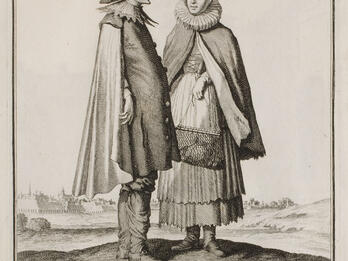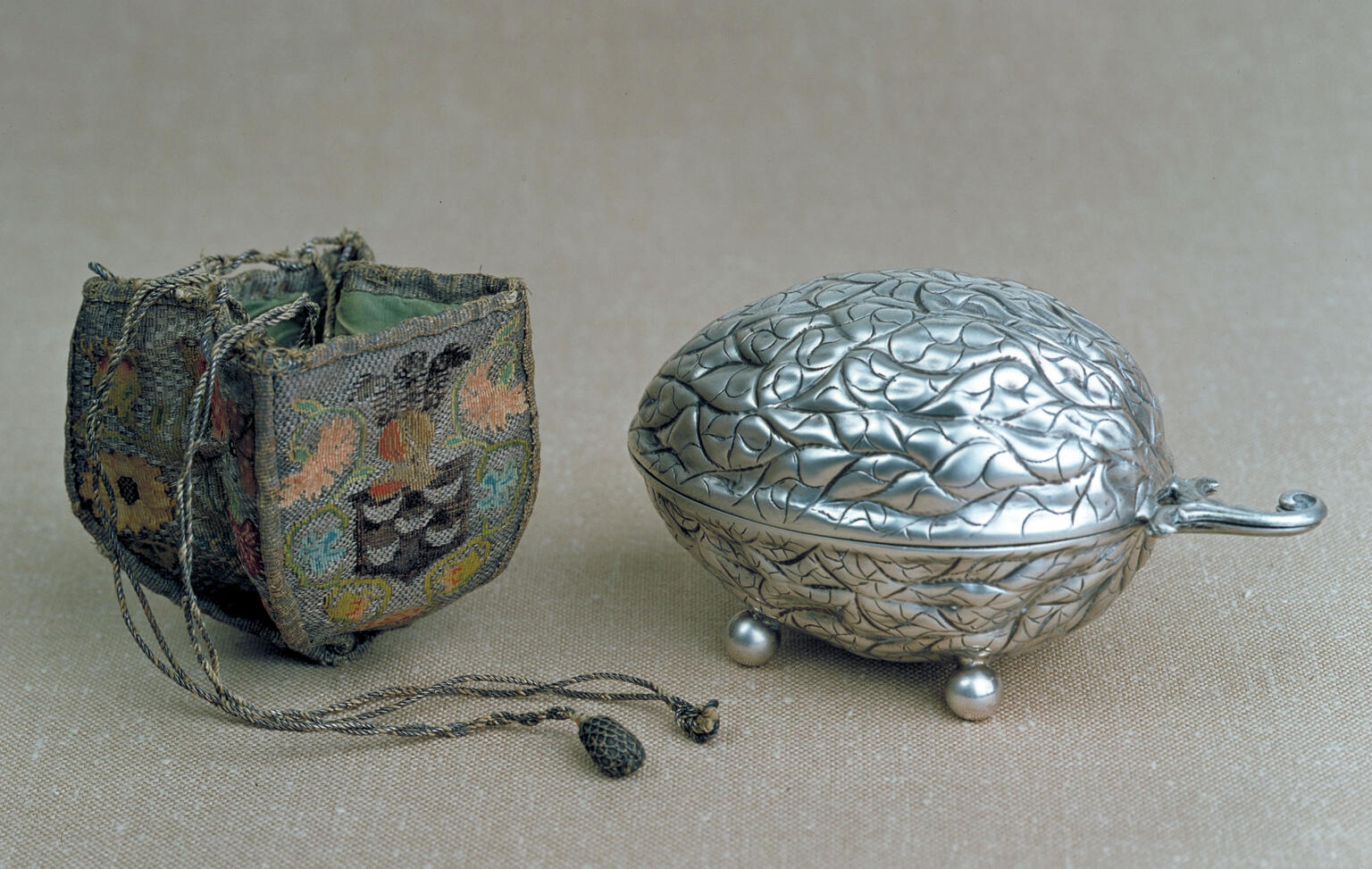De Pinto Etrog Container
Artist Unknown
Late 17th Century
During the holiday of Sukkot, four plant species are used in rituals in the synagogue. One of these is the etrog (citron). While containers to protect the etrog later became more common, they were rare in the seventeenth century when this silver etrog container was commissioned by the wealthy de Pinto family of Amsterdam.
Credits
Collection Jewish Historical Museum, Amsterdam, M001147.
Published in: The Posen Library of Jewish Culture and Civilization, vol. 5.
You may also like
Me‘il tsedakah (Robe of Righteousness)
Regarding that which is written: a man’s gift [makes room for him] (Proverbs 18:16), this means that the gift itself, which one personally gives to the poor, will make room for him. When you provide…

Jewish Man and Woman from Frankfurt
The Jewish couple in Frankfurt am Main depicted here are wearing distinctive clothing that would have clearly identified them as Jews: the man’s collar, hat, and cloak, and the woman’s ruff and winged…
Register of Proceedings: On Charity
We the undersigned have agreed that, seeing the difficulty that there is to collect what every particular member of our Nation must…
Acordos (Regulations): Against Libelous Verses
The gentlemen of the Mahamad [board of governors—Ed.] have received a letter from the very illustrious gentlemen of the Mahamad of the Holy Congregation of T: T: [Talmud…

Map of Suriname
By the time this sea pilot’s map of Suriname was created in 1680, there was a well-established Jewish community there. In the 1660s, Jewish communities arose on the Caribbean islands of Martinique…
Reflexoens politicos tocante a constituaçāo da Naçāo Judaica (Political Reflections Concerning the Constitution of the Jewish Nation)
No matter what the body of the Nation, be it in the form of a kingdom or a republic, it comprises various classes of people; as for the nobles, who make the state blossom through commerce, increased…
Engage with this Source
Related Guide
Jews on the Move: Early Modern Jewish Migration
1500–1750
The geography of Jewish settlement shifted dramatically in the sixteenth and seventeenth centuries.
Related Guide
Community, Congregation, and Self-Government
1500–1750
The early modern period witnessed flourishing Jewish self-governance across the diaspora, as economic utility to host nations enabled unprecedented communal autonomy.
Public Access
Image
Places:
Dutch Republic (Netherlands)
You may also like
Me‘il tsedakah (Robe of Righteousness)
Regarding that which is written: a man’s gift [makes room for him] (Proverbs 18:16), this means that the gift itself, which one personally gives to the poor, will make room for him. When you provide…

Jewish Man and Woman from Frankfurt
The Jewish couple in Frankfurt am Main depicted here are wearing distinctive clothing that would have clearly identified them as Jews: the man’s collar, hat, and cloak, and the woman’s ruff and winged…
Register of Proceedings: On Charity
We the undersigned have agreed that, seeing the difficulty that there is to collect what every particular member of our Nation must…
Acordos (Regulations): Against Libelous Verses
The gentlemen of the Mahamad [board of governors—Ed.] have received a letter from the very illustrious gentlemen of the Mahamad of the Holy Congregation of T: T: [Talmud…

Map of Suriname
By the time this sea pilot’s map of Suriname was created in 1680, there was a well-established Jewish community there. In the 1660s, Jewish communities arose on the Caribbean islands of Martinique…
Reflexoens politicos tocante a constituaçāo da Naçāo Judaica (Political Reflections Concerning the Constitution of the Jewish Nation)
No matter what the body of the Nation, be it in the form of a kingdom or a republic, it comprises various classes of people; as for the nobles, who make the state blossom through commerce, increased…



